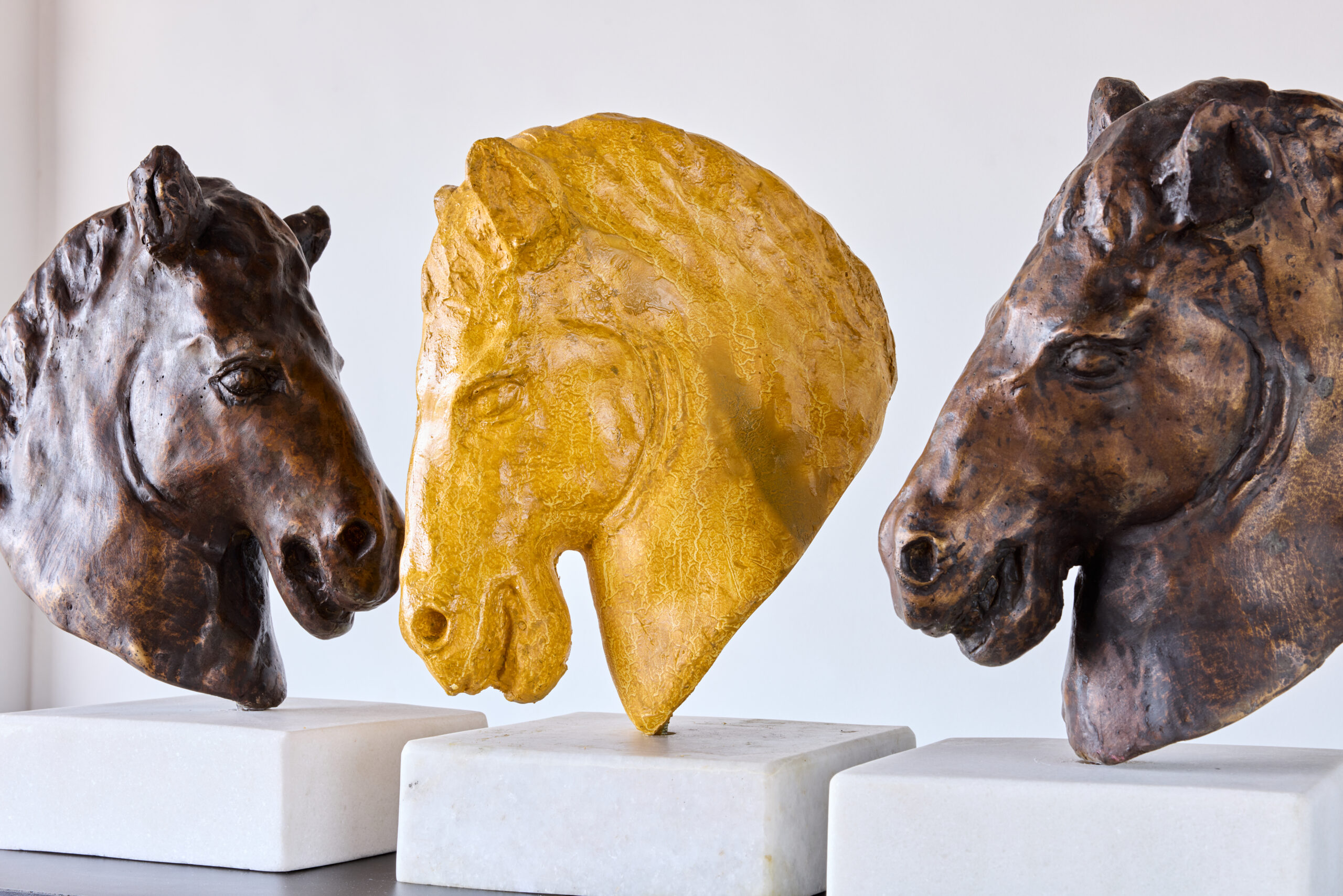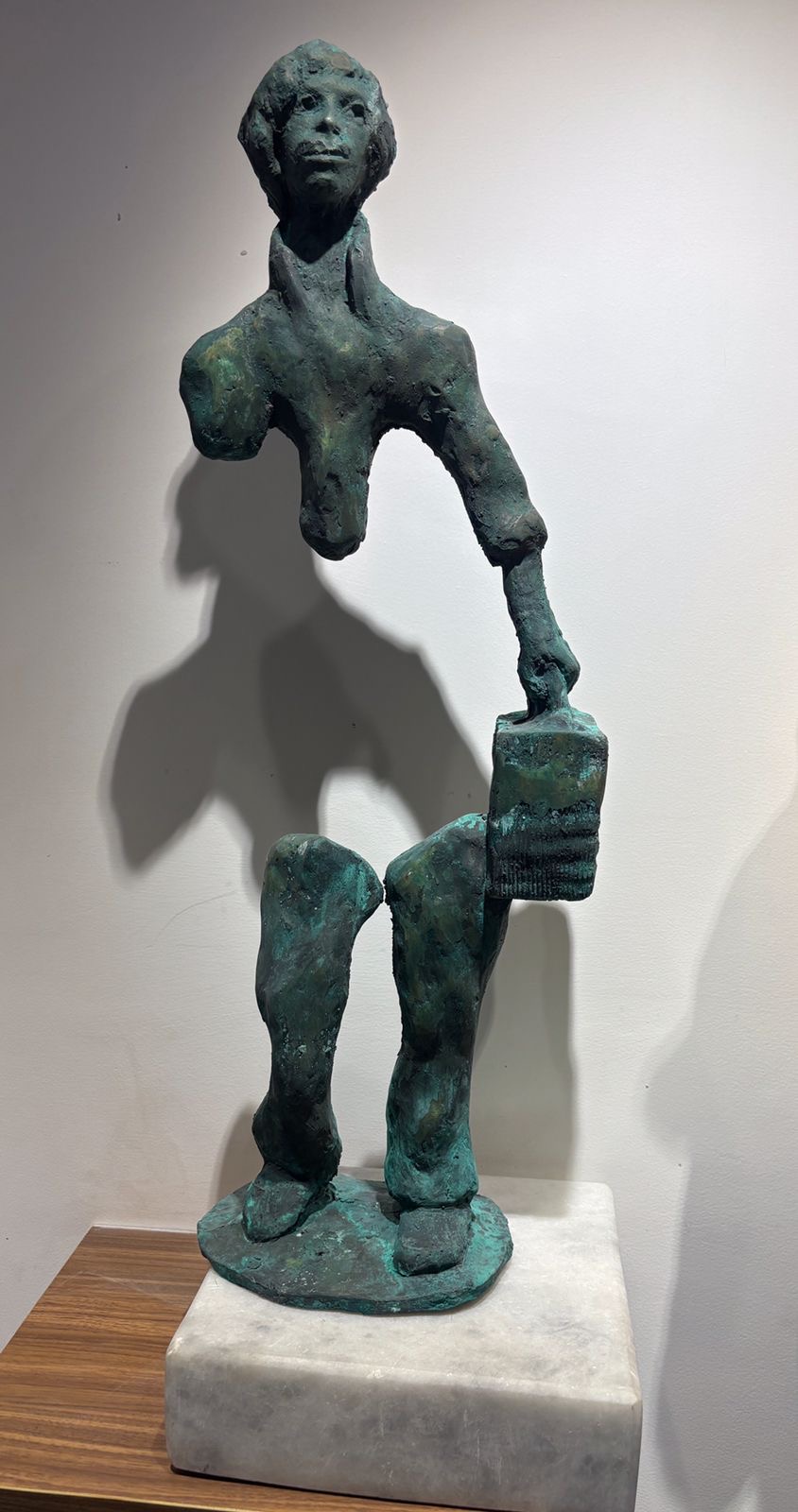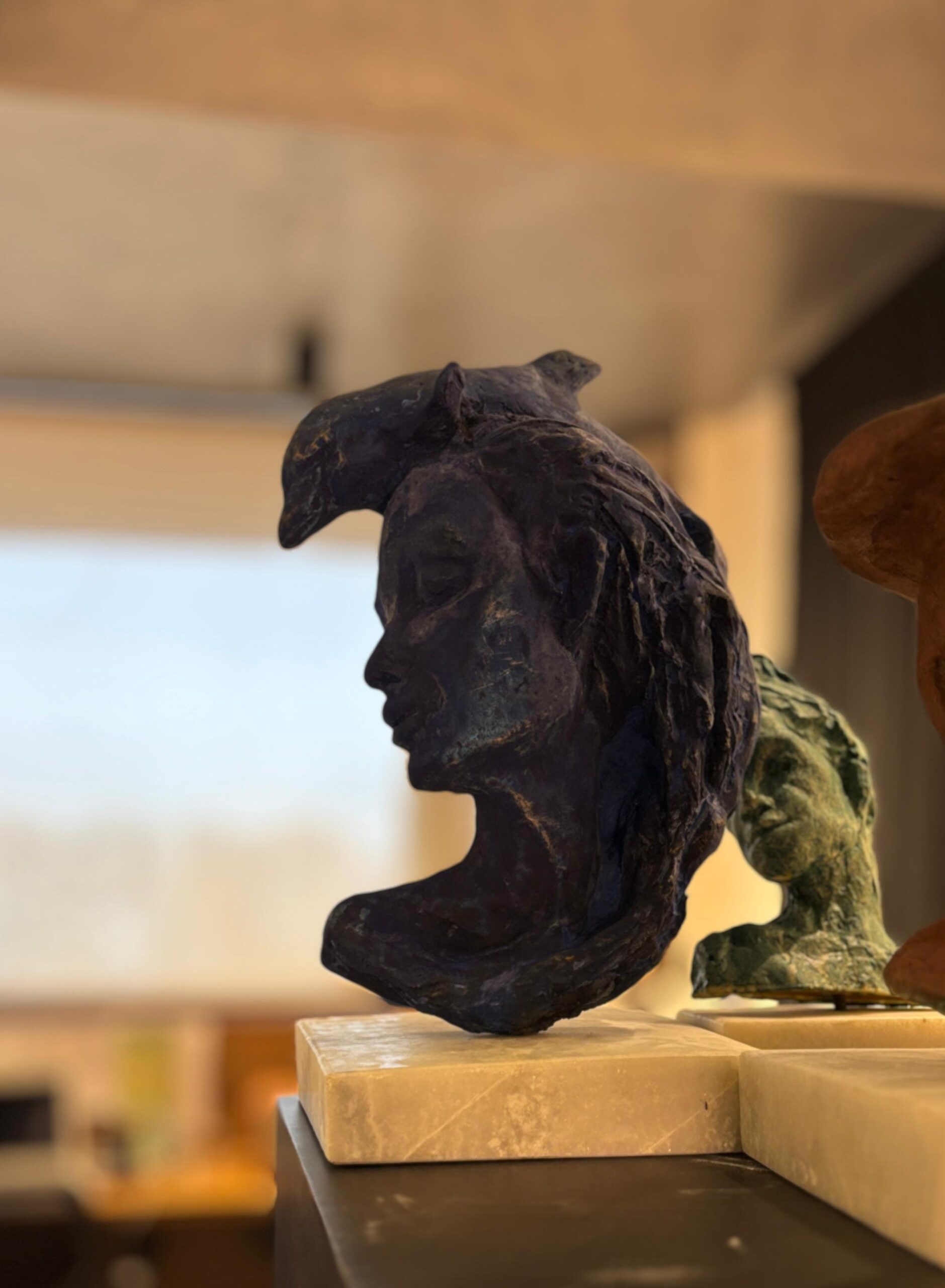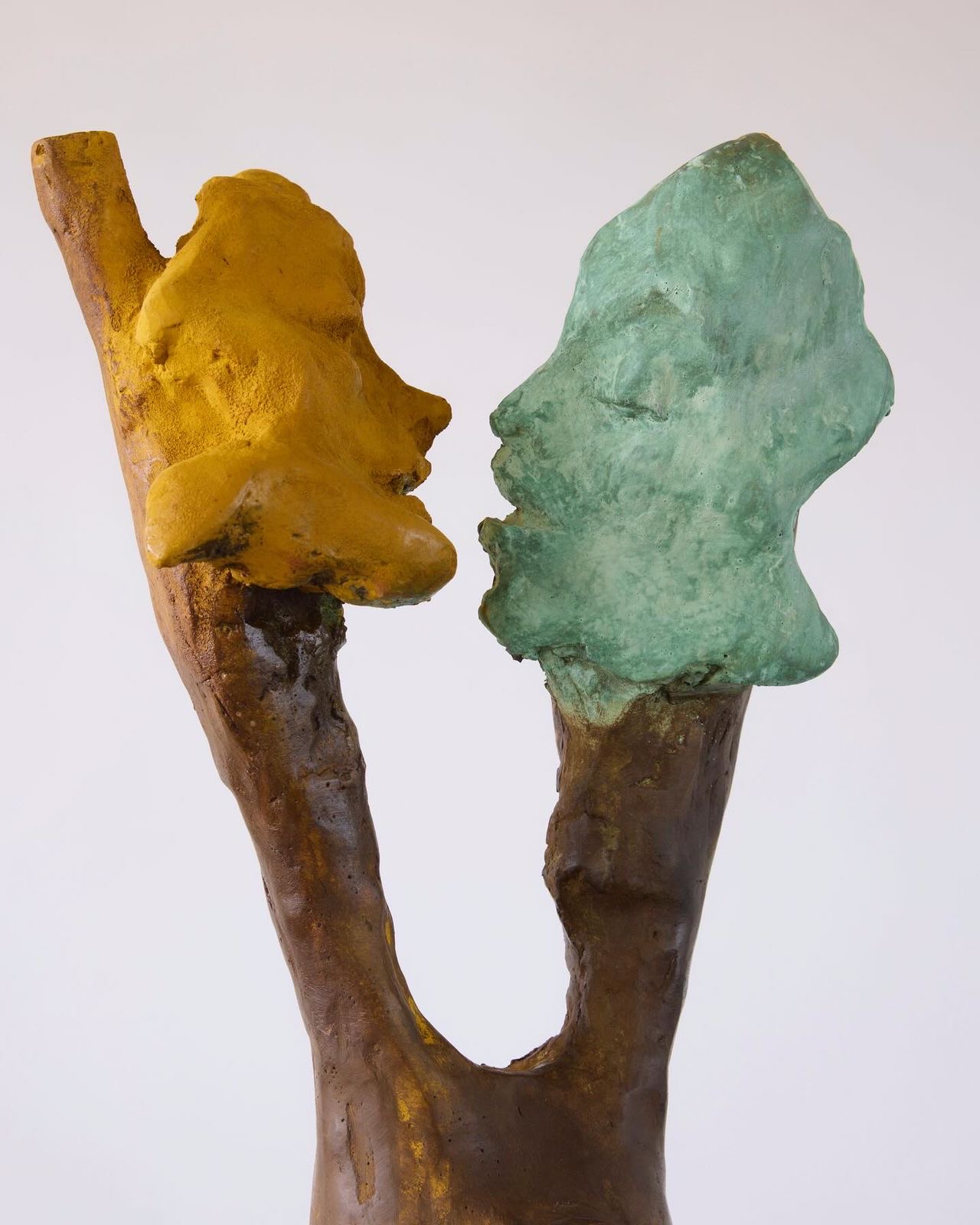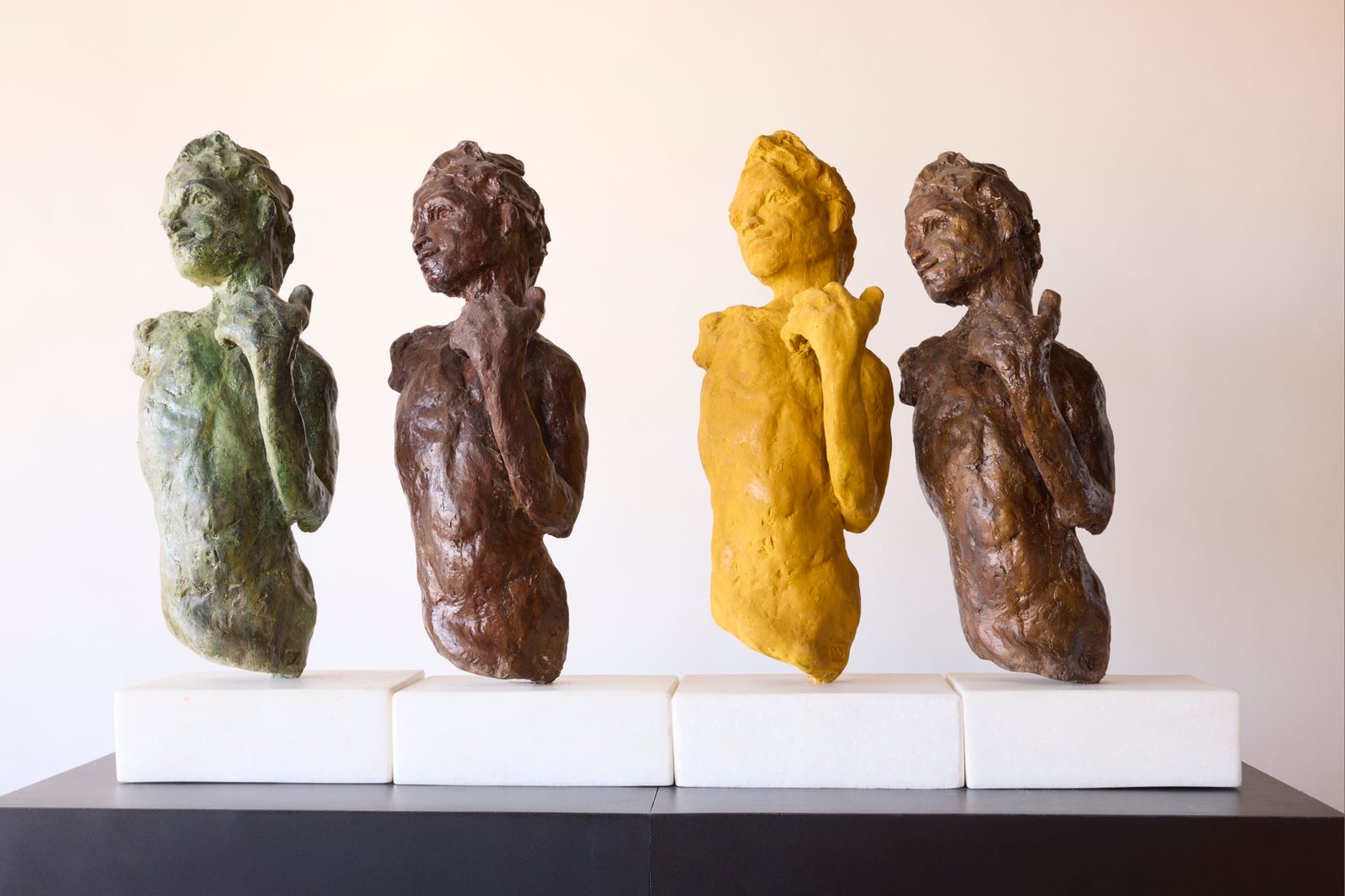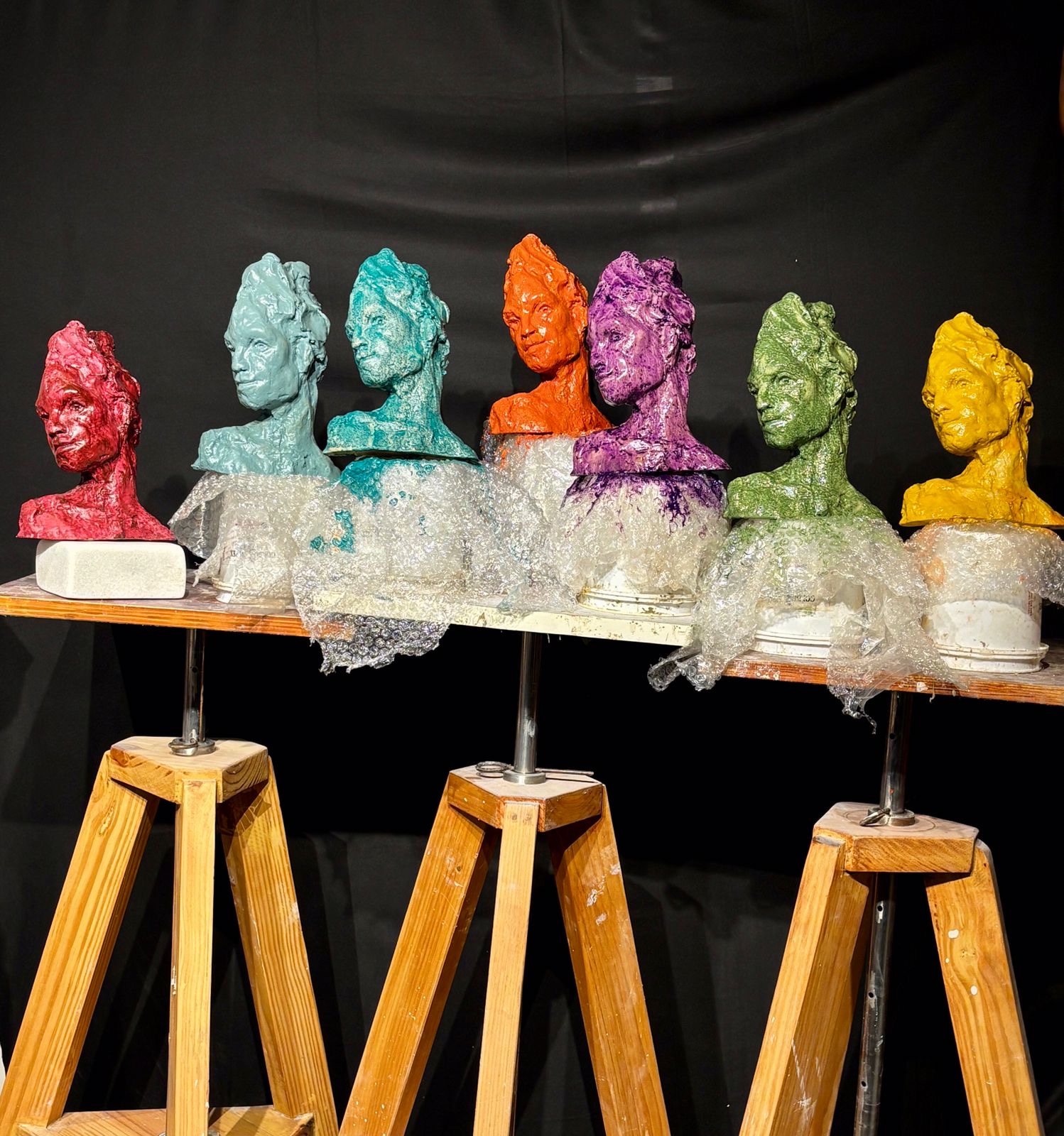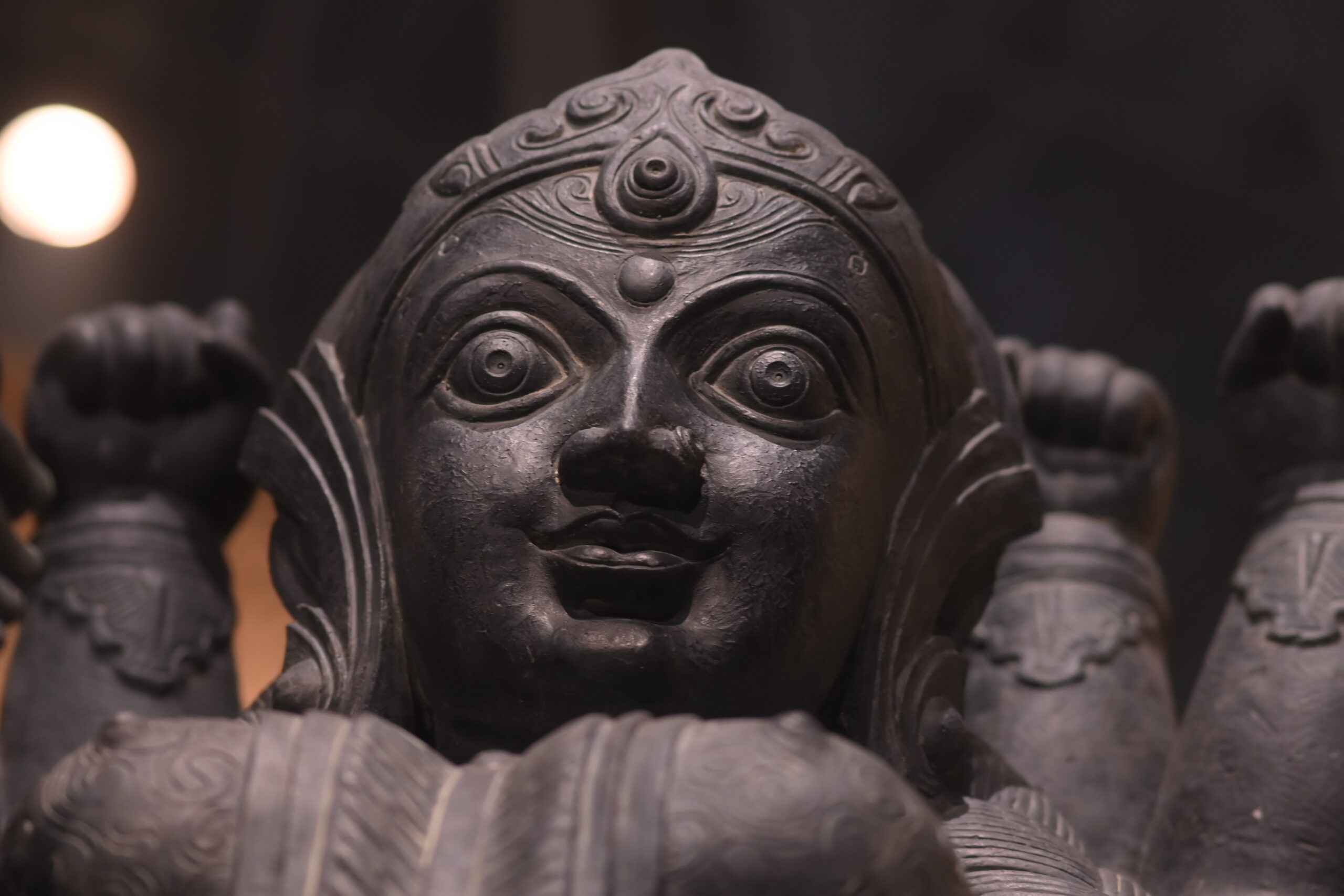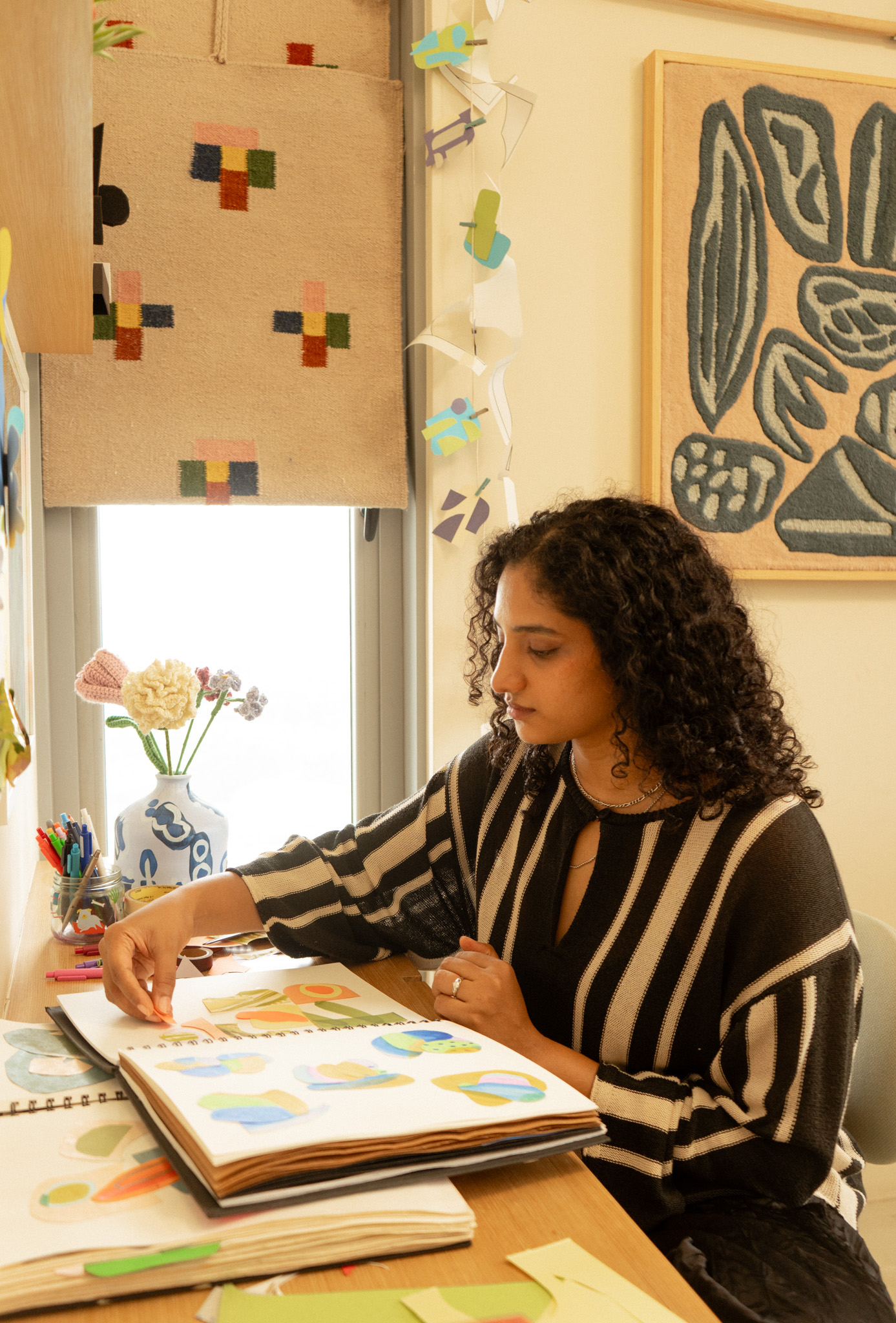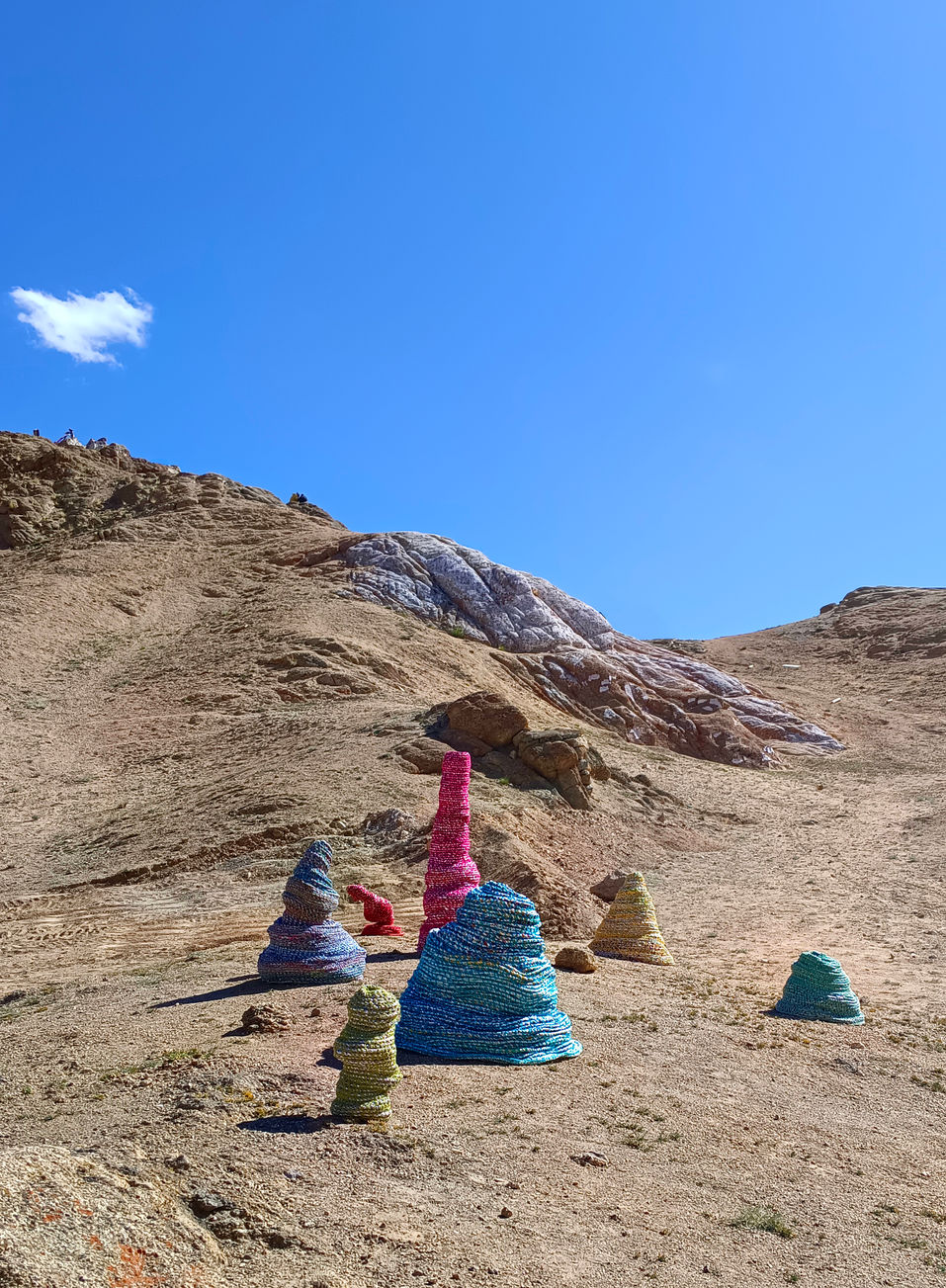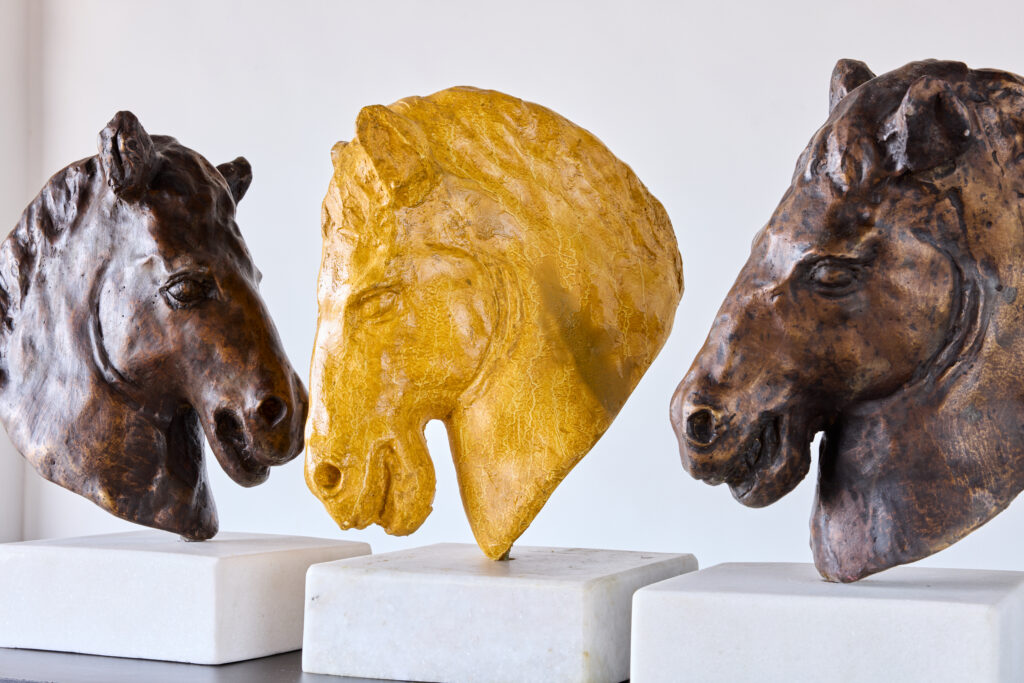
In a moment when much of the art world is racing toward virtual experiences and AI‑generated imagery, Niyamat Mehta works in a medium that deliberately slows things down. For her, sculpture isn’t just about what you see; it’s about being physically present with a piece: feeling its weight, tracing the texture of its surface and noticing how it shifts as you walk around it. This understanding began in the art room of her boarding school in Sanawar, where she first experimented with clay. The process, she says, felt instinctive, almost familiar, and that direct, hands-on way of working still anchors her practice. Even now, she approaches each piece intuitively, shaping and refining it until the form feels resolved. That emphasis on physical engagement is shaped by a wider conversation in her practice. She often talks about how sculpture slows down the viewer, asking them to stay and look rather than scroll past. She sees it as a counterpoint to a world saturated with images on screens.
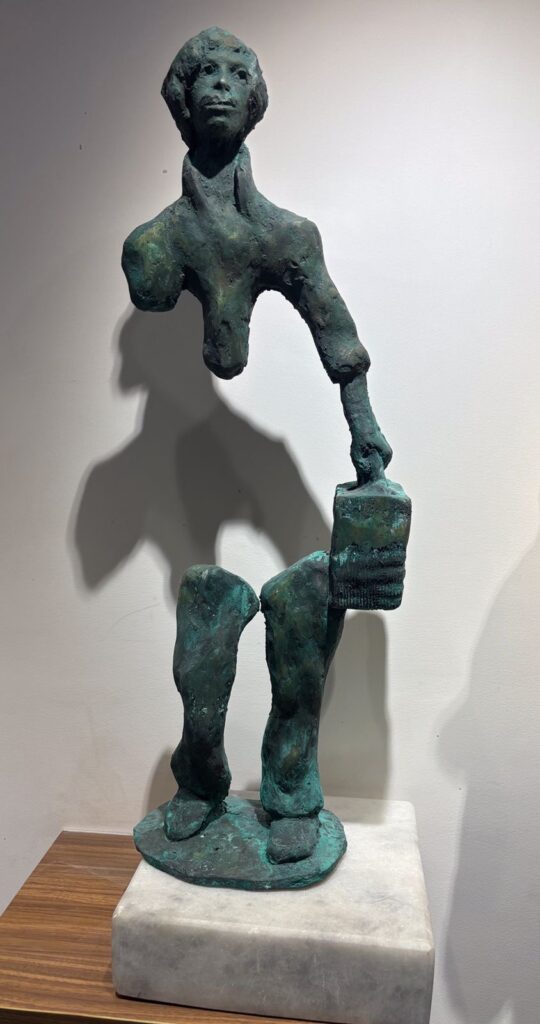

Her sculptures often sit between figuration and abstraction. A torso leaning forward, a hand mid‑motion, the curve of a horse’s neck; recognisable yet stripped to their essentials. In her Meraki series, she chose to work with fragments rather than complete figures, allowing a single part of the body to hold the emotional weight of the whole. The choice is deliberate, sharpening the viewer’s focus and leaving space for interpretation. When asked why she fragments, she points to Western sculpture history, where cropped torsos and hands carried expressive power. For her, it’s about making design choices that communicate what she has in mind. Fragmentation, she says, lets her draw attention to certain gestures or emotions without the distraction of the whole. She hopes viewers will feel the energy of a sculpture as though it’s gently releasing something into space, and she thinks constantly about gesture, movement and emotion: all the things that give a sculpture life.
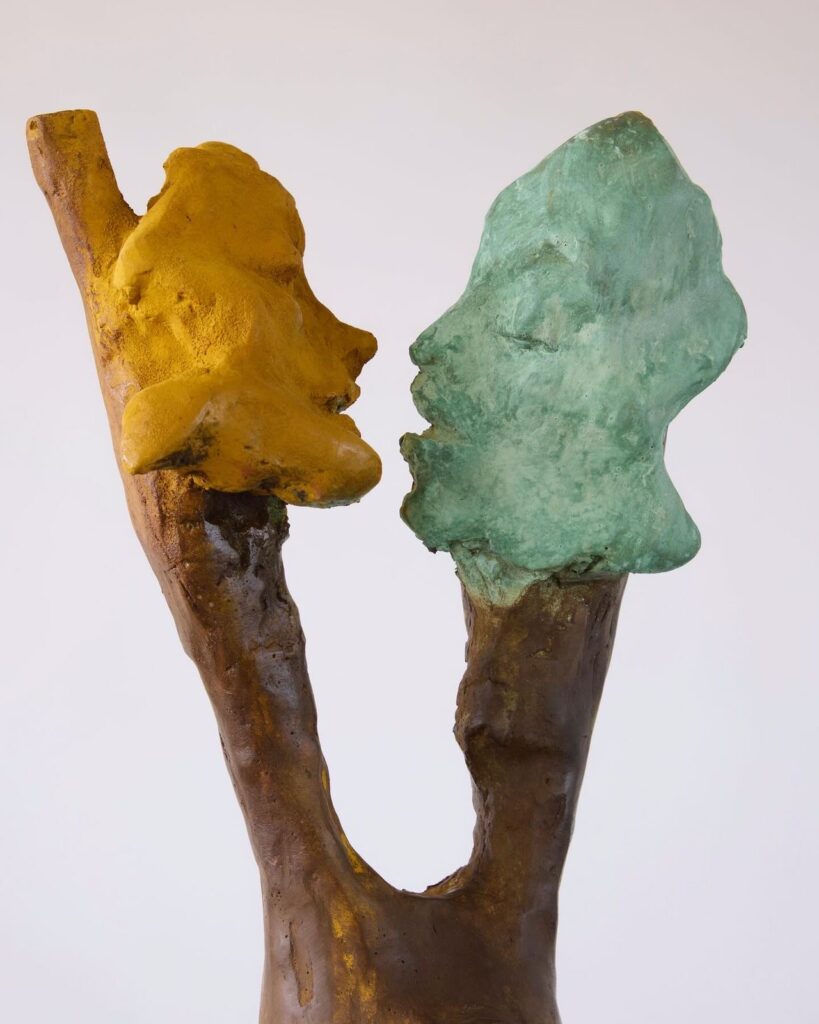
Her decisions about how much to reveal and how much to hold back come naturally. If a form feels too literal or doesn’t sit well visually, she pares it back until it lands in a space between revealing enough and leaving something to the imagination. That balance, she says, keeps the work alive. Mehta is drawn to stories and symbols that carry emotional weight; whether it’s a mythological figure, a surreal gesture, or something as simple as a bird, what matters to her is that the form feels honest and deeply felt. When she works with culturally resonant imagery like Hindu myth or Greek form, she doesn’t try to control how it’s read. She welcomes the fact that people bring their own cultural lenses and experiences to the work; her goal is to create something sincere that can speak across contexts.
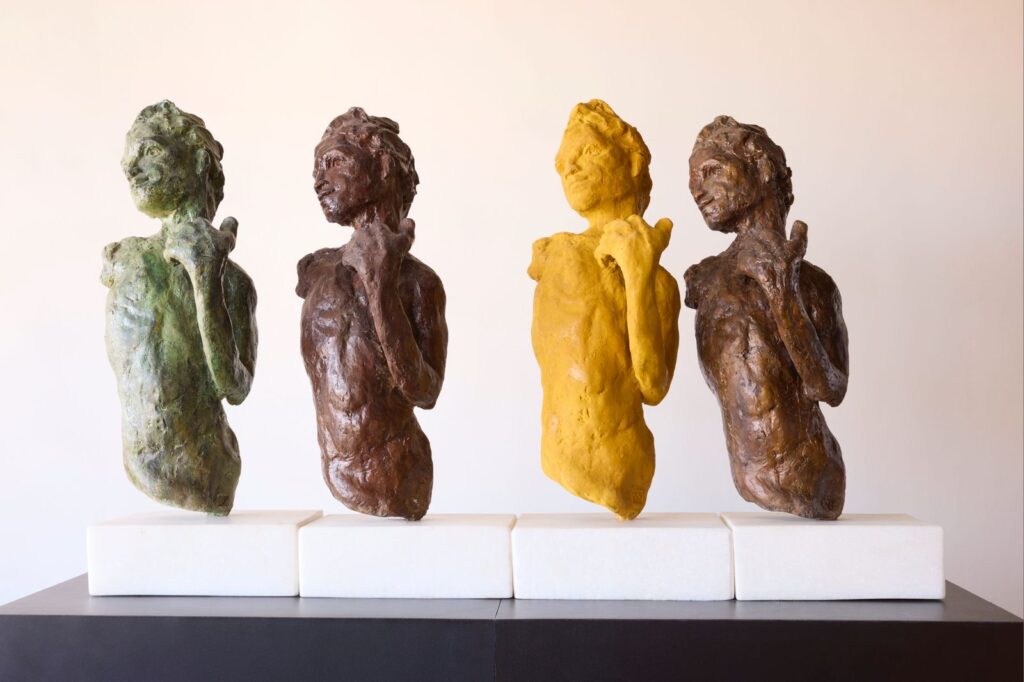
Material decisions for her are just as considered. Bronze, valued for its history, weight, and adaptability, has recently become her primary medium. A shift in patina, according to her, can transform the mood entirely, offering new tonal possibilities without altering the structure. The subjects she chooses reflect her fascination with movement, myth and popular culture. Horses are recurring motifs: their expressive bodies and mythic associations offer endless possibilities for exploring power, grace and vulnerability. The aim is always to create something believable without relying on strict realism. She is equally inspired by dance, surrealist imagery, pop culture, and artists such as Eudald de Juana and Rodin whose work carries emotion, sensitivity and rawness – qualities she tries to channel in her own practice.
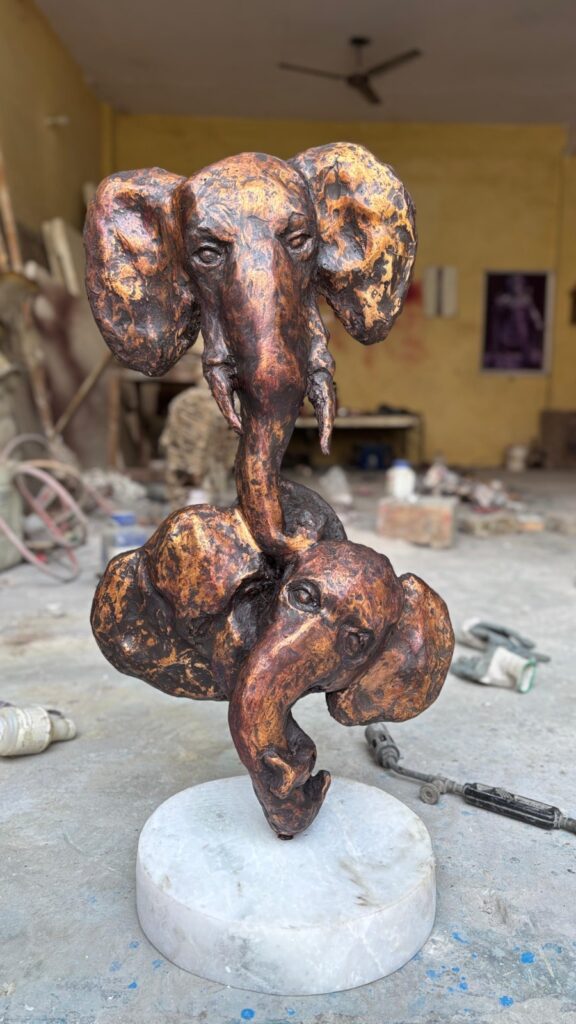
Her upcoming solo exhibition at Bikaner House in New Delhi, from 20 – 24 September 2025, builds on the momentum of Meraki but shifts from fragments to more resolved forms, focusing on horses and human portraits: two subjects Mehta sees as deeply expressive in their balance of strength and vulnerability. Alongside her exhibition schedule, she runs Atelier Della Firenze, a hybrid space that functions as studio, gallery and classroom. Located in New Delhi, the studio is where she produces her own work, mentors emerging sculptors and offers masterclasses. She emphasises that anyone with genuine curiosity can sign up; the goal is to keep sculpture visible, tactile and in active conversation with its audience. More than just a studio, it’s intended as a space that nurtures both practice and curiosity.
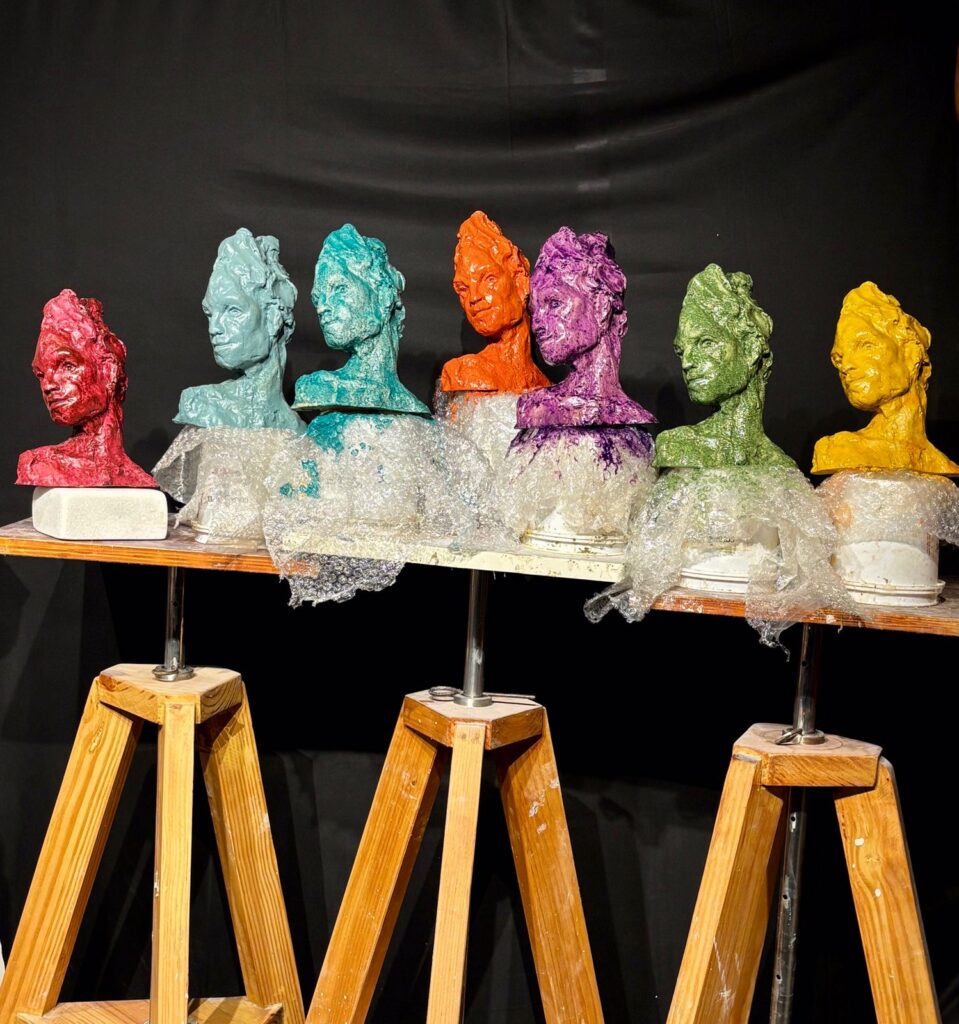
This commitment to sharing and outreach reflects a broader theme in her work: the desire to bridge traditional craft with contemporary life. While her classical training grounds her practice, she embraces influences from surrealism, pop culture and mythology. Her use of Indian attire on Western pop stars underscores her aim to merge Indian heritage with a global culture, reflecting her own experience of living between India and Europe. For Mehta, sculpture is not just an object to be looked at, but an encounter. It slows the pace, asks for attention and unfolds in the space between the viewer and the form. The physicality of her materials invites you to move around them, to notice how light plays on a curve and to feel the weight of a gesture. In an era when art is often consumed on screens and instantly forgotten, her work encourages a different kind of engagement, one that rewards patience and curiosity.
